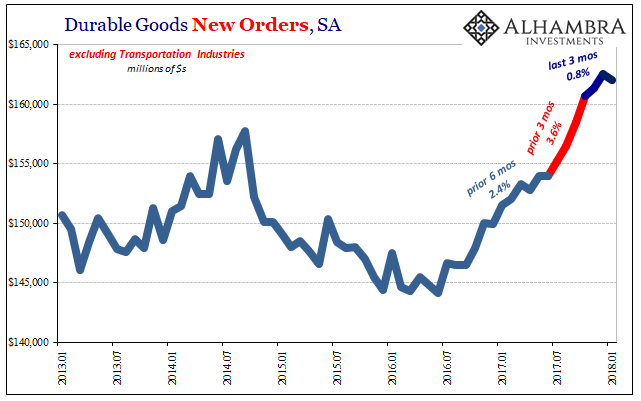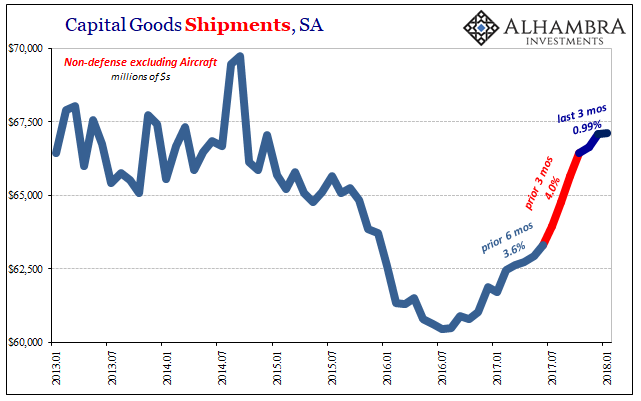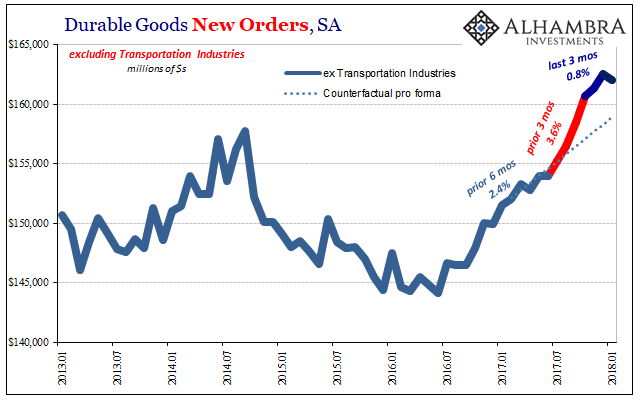New orders for durable goods, excluding transportation industries, rose 9.1% year-over-year (NSA) in January 2018. Shipments of the same were up 8.8%. These rates are in line with the acceleration that began in October 2017 coincident to the aftermath of hurricanes Harvey and Irma. In that way, they are somewhat misleading.
The seasonally-adjusted data gives a better sense of the distortions created by those storms. New orders for durable goods on a monthly basis fell in January 2018 from December 2017. Over the past three months going back to October, new orders have increased by less than 1%.
That’s in sharp contrast to the three month-period before that one. In that quarter-year, durable goods orders were up a robust 3.6%, which works out to annual rate of 15%. Now, that would be a boom. But in the six months before then, orders were up just 2.4%. That means the last three months and those prior six months were far more consistent with each other. It’s those three months coincident to the storms that are way out of line.

Since the very same distortions are found in the capital goods series, too, it stands to reason that what happened in that period wasn’t the beginning of an economic boom after all. Rather, it conveniently fed that narrative and so was often used in that manner. Whether or it that was intentionally disingenuous depends upon the context, though in truth there wasn’t any excuse since this was all very predictable.

To get a sense of the distortion, we can do some back-of-the-envelope extrapolations to plot where each series “would” have been had the tropical summer weather never intruded. Using the growth rate for the first six months of that year period, creating a counterfactual case that we shouldn’t view definitively, the difference is substantial.

In terms of durable goods new orders, the year-over-year growth might have been something like 4.9% rather than 9.1%. The latter figure isn’t all that robust to begin with but is at least comparable to the last upturn in 2014. If the storm distortion was as large as suggested here, then durable goods would have been significantly less than all that, greatly undercutting the narrative.













Leave A Comment